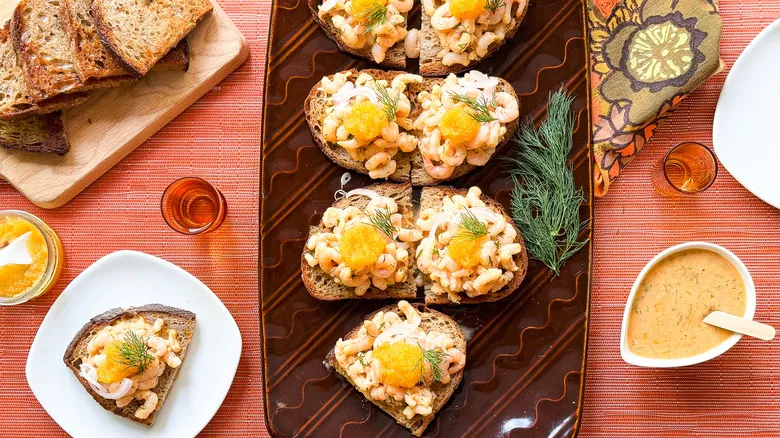Gather the shrimp salad toast Skagen ingredients
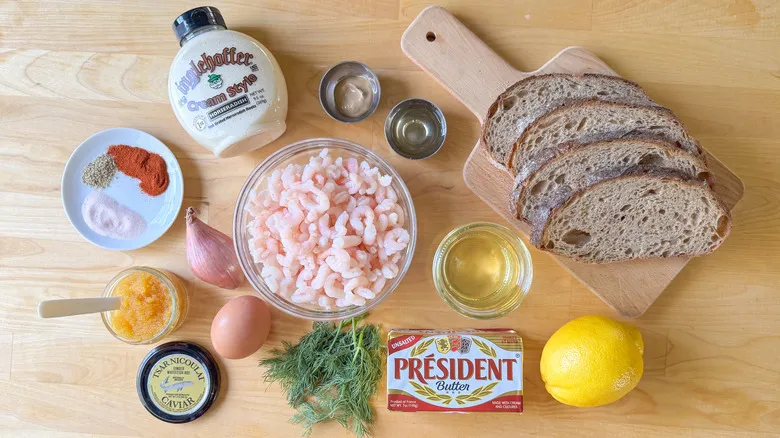
To prepare the shrimp salad, begin with small salad shrimp, typically categorized as 71–90 shrimp per pound. If you prefer larger cooked shrimp, simply chop them into ½-inch pieces. For the mayonnaise dressing, gather a very fresh egg yolk (which will be "cooked" by the vinegar and lemon juice), Dijon mustard, white wine vinegar, a neutral vegetable oil (like sunflower, safflower, or canola), chopped fresh dill, creamed horseradish, lemon juice, smoked paprika, sea salt, and white pepper. For the toast, opt for a hearty rye bread that can adequately support the shrimp. Kinnaird recommends using a rich, European-style butter for skillet-toasting the bread. Top each slice with thinly sliced shallots and additional fresh dill, along with your choice of roe (whitefish roe is the traditional option).
Step 1: Start the mayonnaise
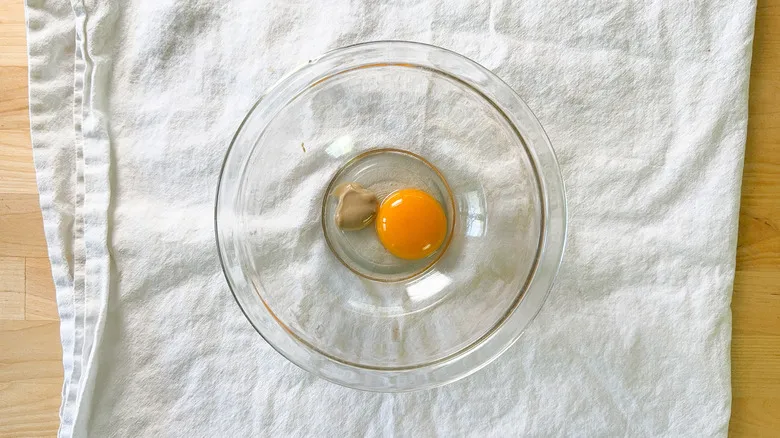
To prepare the mayonnaise, place a medium bowl on a folded towel for stability, then add the egg yolk, mustard, and vinegar.
Step 2: Whisk until smooth
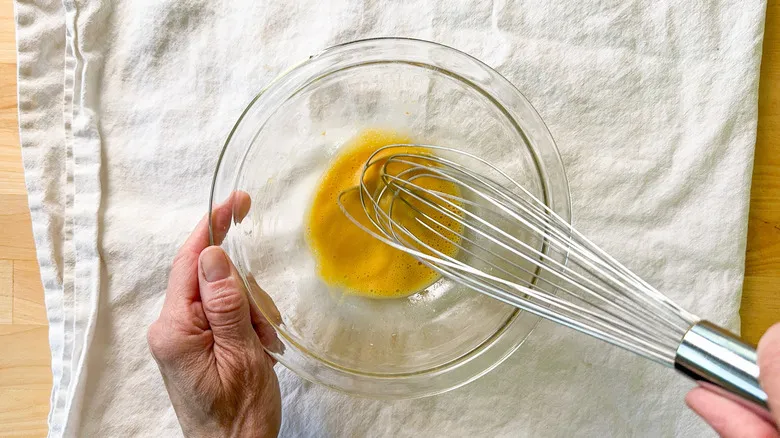
Blend together until creamy.
Step 3: Add the oil
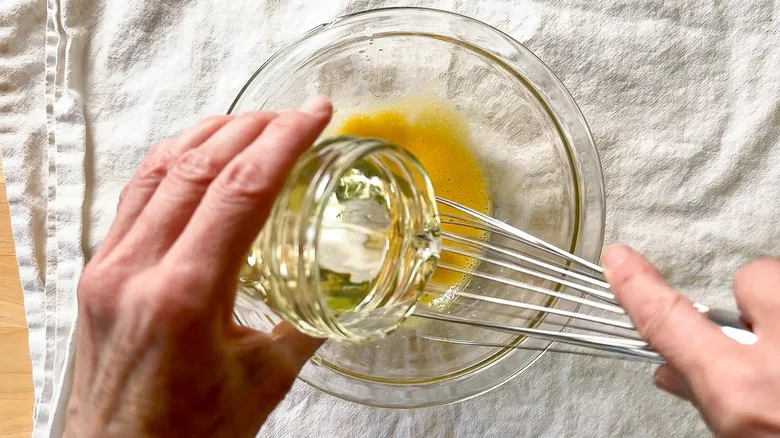
Gradually incorporate the oil, adding it drop by drop, while continuously whisking.
Step 4: Whisk in the remaining oil
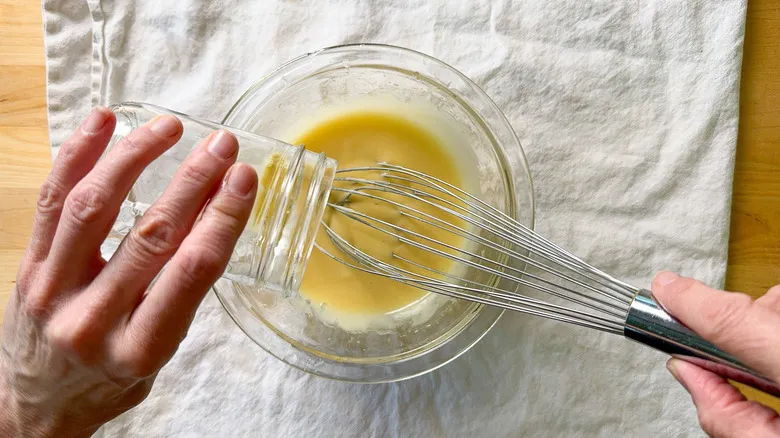
As the mixture begins to thicken, gradually add the oil in a steady stream while whisking continuously to achieve emulsification.
Step 5: Add the dill, horseradish, lemon juice, smoked paprika, sea salt, and white pepper
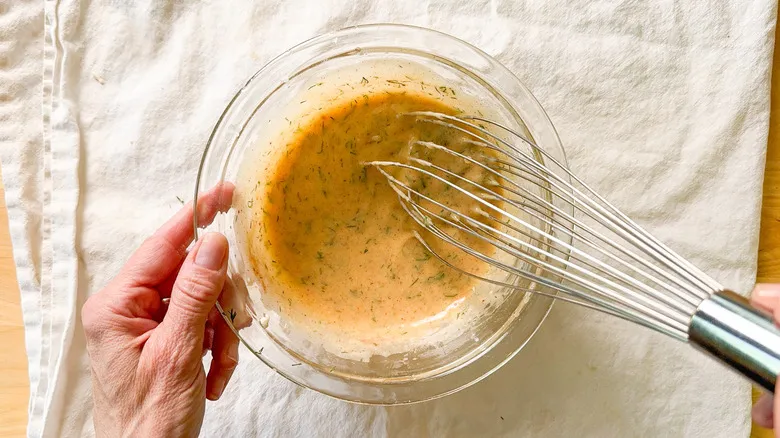
Incorporate the chopped dill, horseradish, lemon juice, smoked paprika, sea salt, and white pepper, whisking until well blended.
Step 6: Place the shrimp in a bowl
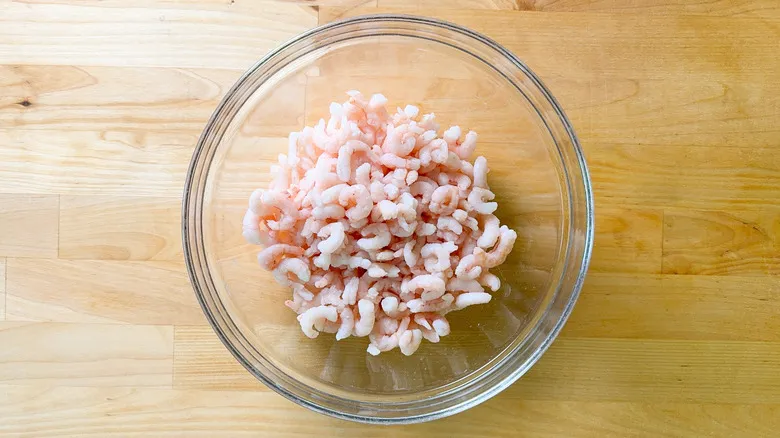
Dry the shrimp with a paper towel and transfer it to a mixing bowl that is sufficiently large.
Step 7: Toss the shrimp with the dressing
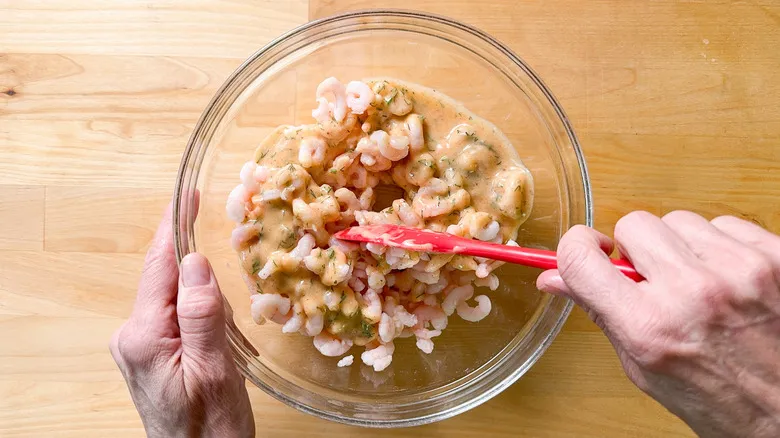
Incorporate ? cup of the mayonnaise dressing with the shrimp and gently mix to combine. Set aside the leftover dressing.
Step 8: Cover the bowl and chill
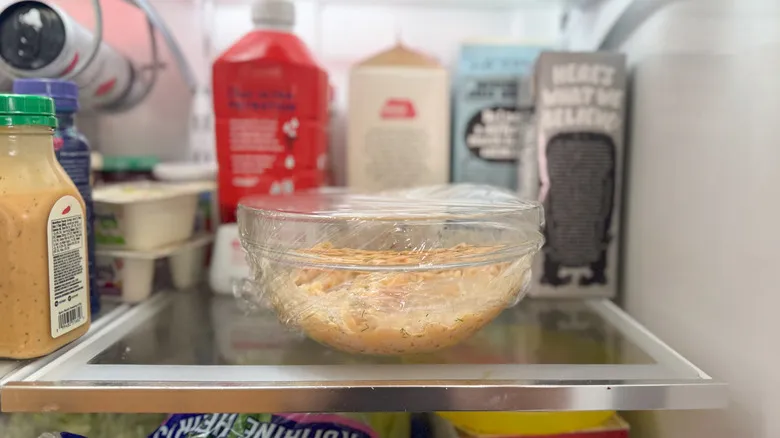
Cover the bowl and refrigerate until needed.
Step 9: Melt the butter
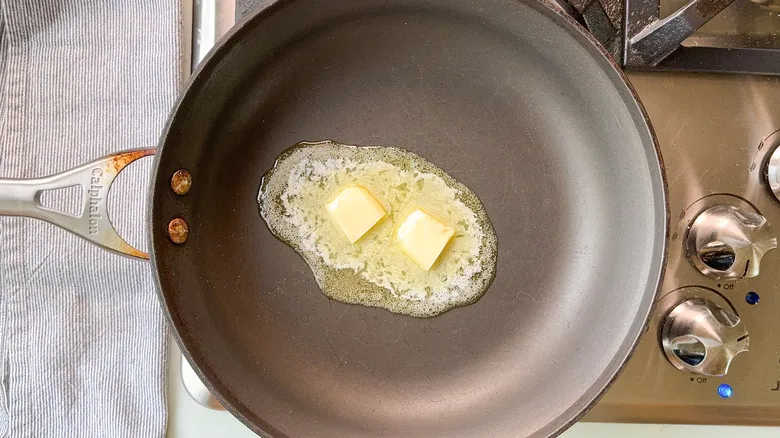
Heat the butter in a large, sturdy skillet over medium heat until it melts.
Step 10: Add the bread to the skillet

Place the bread slices in the pan and cook for approximately 5 minutes.
Step 11: Turn the slices and cook
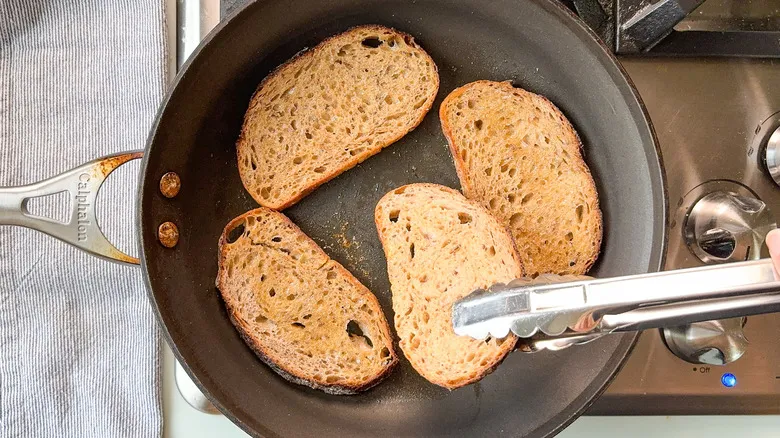
Flip the slices and cook on the opposite side until they are golden and toasted.
Step 12: Cut the slices into halves

Move the toast to a cutting board and slice it in half.
Step 13: Arrange the toast on a platter
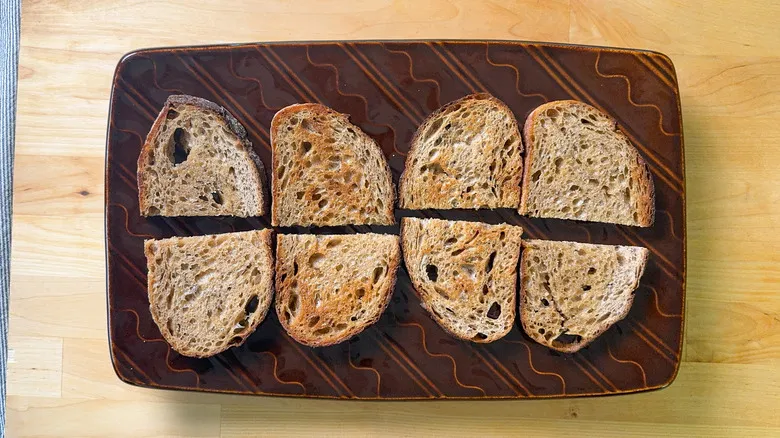
Place the toast on a serving tray.
Step 14: Top with the shrimp salad
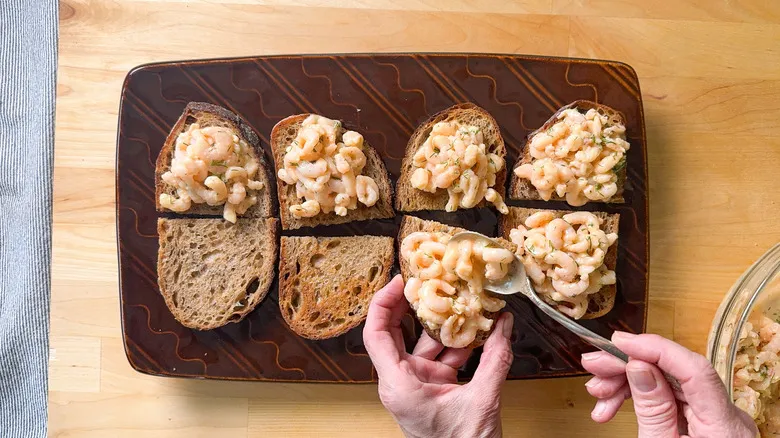
Add the shrimp salad on top of the toast.
Step 15: Garnish the toasts

Top the shrimp salad with a dollop of roe, a couple of shallot slices, and a sprig of fresh dill.
Step 16: Serve the shrimp salad toast Skagen
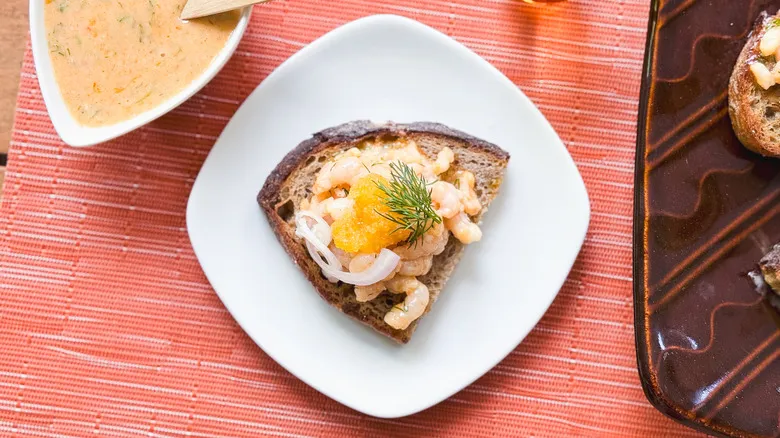
Serve the toast Skagen right away, accompanied by the extra dressing on the side for drizzling.
What is the origin of toast Skagen?
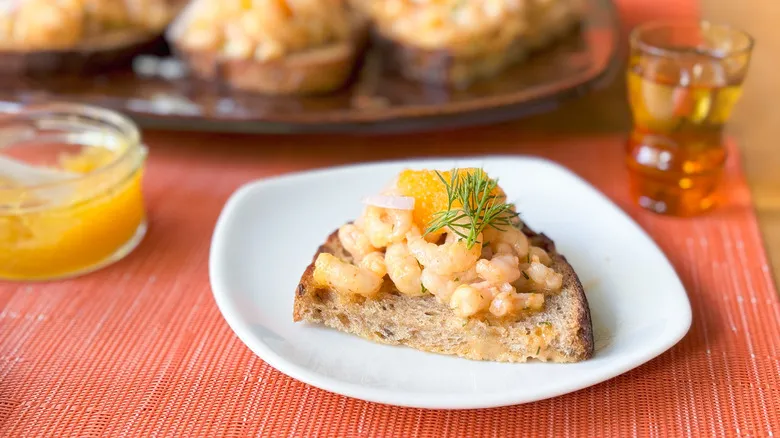
Toast Skagen is attributed to Swedish chef Tore Wretman, a prominent restaurateur in Stockholm and a passionate sailing enthusiast. According to legend, he crafted this dish using basic ingredients aboard his boat while competing in a sailing event off the coast of Skagen in 1956. He aimed to uplift his crew, who were struggling in the competition, by preparing a comforting bite from the supplies he had on hand.
The dish proved to be a hit, prompting Wretman to present a more refined version to his patrons in Stockholm. Its allure lies in the delightful interplay of textures and flavors; the crisp, buttery rye serves as an ideal base for the tender shrimp and rich sauce. The addition of roe elevates the dish, imparting a sense of elegance and festivity. According to Kinnaird, toast Skagen has become a staple at Midsummer celebrations in Sweden and remains a beloved menu item year-round.
What type of roe should you use for shrimp salad toast Skagen?
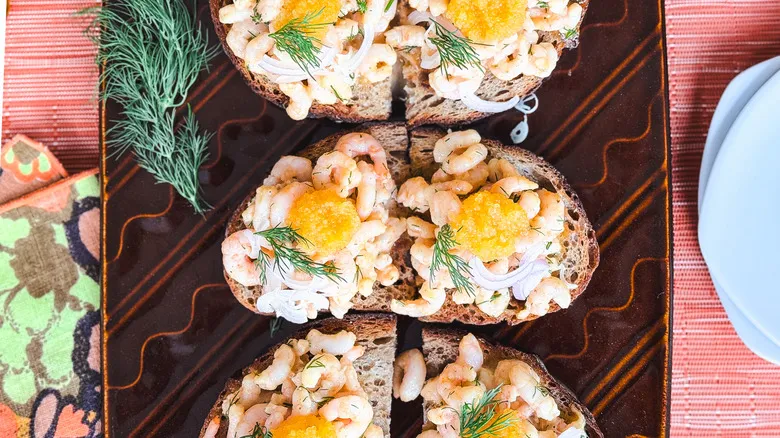
The terms "roe" and "caviar" are frequently used interchangeably, but it's important to note that not all roe qualifies as caviar. Both refer to fish eggs, but caviar specifically comes from certain sources, while roe can denote the unfertilized eggs of various marine species. By definition, only salt-cured roe from sturgeon is considered caviar. Traditionally served with a mother-of-pearl spoon, caviar is regarded as a luxury item, despite its origins as a food for the lower classes.
As the popularity of roe has grown, so too have the culinary classifications for its different types. For instance, Toast Skagen is commonly garnished with golden whitefish roe, which is mild and creamy with small eggs that complement the delicate flavor of shrimp without overwhelming it. Its texture provides a subtle contrast to the creamy and crunchy elements of the dish. Kinnaird recommends using trout roe as another mild and small-beaded alternative to whitefish. In contrast, salmon roe is generally larger and has a stronger flavor, which may not suit this particular dish.
Recommended
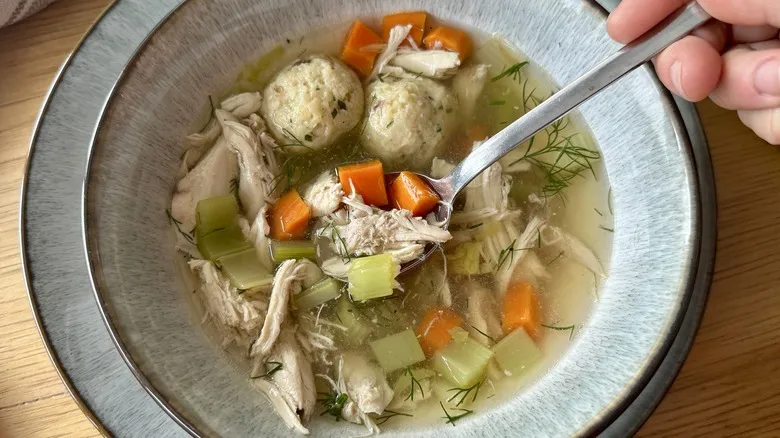
Classic Comforting Matzo Ball Soup Recipe
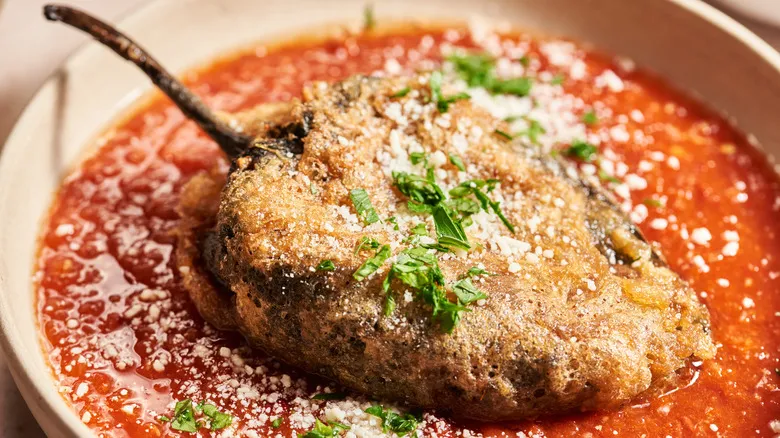
Classic Chiles Rellenos Recipe
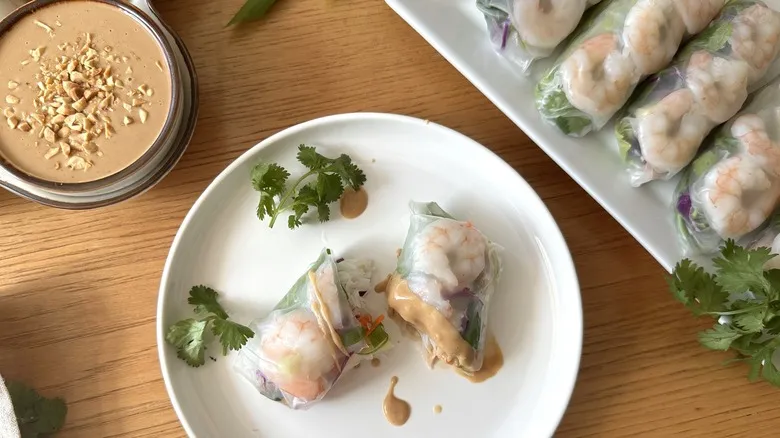
Vietnamese Shrimp Summer Rolls And Peanut Sauce Recipe
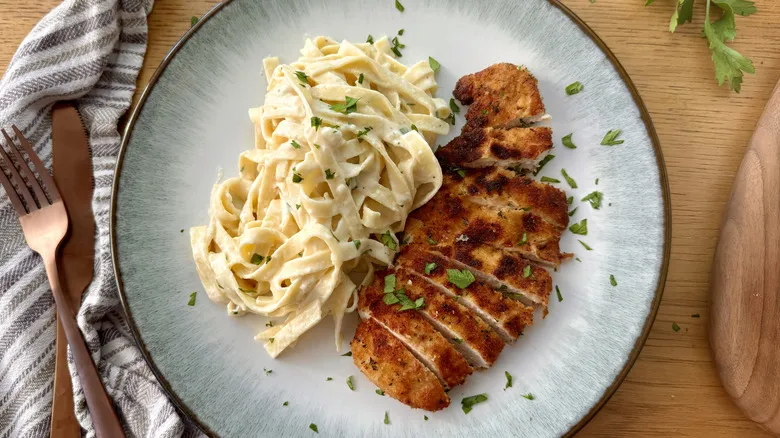
Ultra Creamy Chicken Fettuccine Alfredo Recipe
Next up

